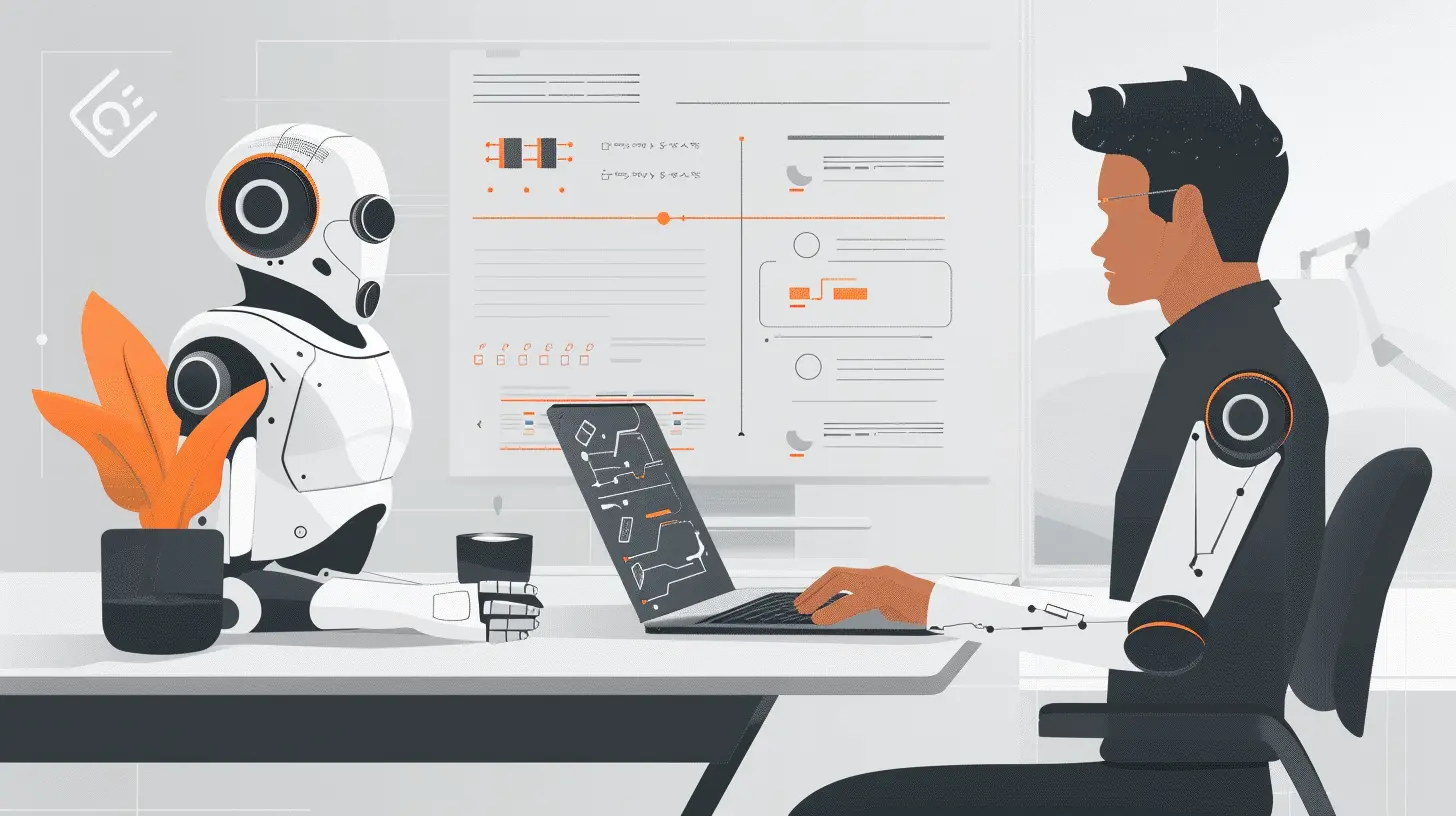The Role of AI and Automation in Remote Work
8 September 2025
Remote work has become the new normal, and let’s be honest—it’s a love-hate relationship for most of us. On one hand, we can work in pajamas and avoid awkward small talk by the coffee machine. On the other hand, managing deadlines, distractions, and digital overload can feel like we’re juggling flaming swords.
Enter AI and automation, the dynamic duo swooping in to make remote work less chaotic and more productive. But how exactly do they help? And should we be worried they might take over our jobs while we're distracted by a TikTok break? Let’s dive in and find out! 
AI and Automation: A Remote Worker’s Best Friends
We’ve all been there—wasting hours on repetitive tasks, drowning in emails, and trying to make sense of endless Zoom meetings. AI and automation are here to rescue us from this madness by streamlining workflows, eliminating redundancies, and making work-life balance a reality rather than a myth.Here’s how they’re changing the game:
1. Automating the Boring Stuff
Let’s face it—no one enjoys scheduling meetings, sorting emails, or filling out spreadsheets. AI-powered tools like Calendly, Grammarly, and Zapier take care of these mind-numbing tasks, freeing up our time for more important things (like binge-watching our favorite shows during lunch breaks).- Email overload? AI filters your inbox, prioritizing important messages while tossing junk mail into the abyss.
- Never-ending data entry? Automation tools fill in the blanks, so you don’t have to.
- Meeting scheduling nightmares? AI assistants handle that for you without a hundred back-and-forth emails.
Basically, AI is like that super-organized friend who reminds you about deadlines and takes care of the details—without rolling their eyes at your procrastination.
2. Supercharging Productivity with AI Assistants
Remember when having a personal assistant was a luxury reserved for CEOs? Well, thanks to AI, we can all have our own digital sidekick.From Siri and Alexa to AI-powered writing assistants like ChatGPT and Jasper, these tools help us brainstorm ideas, draft emails, and even summarize lengthy reports (because honestly, who has the time?).
AI can:
- Generate content ideas when your brain is running on fumes.
- Write and edit documents, saving you from grammatical embarrassment.
- Take meeting notes and provide summaries, so you don’t have to rewatch that two-hour Zoom call.
It’s like having a virtual coworker who doesn’t steal your lunch from the fridge.
3. Making Collaboration Effortless
One of the biggest challenges of remote work is staying connected with your team without feeling like you’re lost in a digital black hole. AI and automation make collaboration smoother by:- Enhancing virtual meetings – AI transcription tools like Otter.ai create real-time captions, so you never have to ask, “Wait, what did they just say?”
- Streamlining project management – Platforms like Trello, Asana, and Monday.com use AI to assign tasks, send reminders, and keep projects on track.
- Breaking language barriers – AI-powered translation tools ensure clear communication among global teams, so no one feels out of the loop.
Gone are the days of endless email threads and forgotten action items—AI keeps everything (and everyone) in sync. 
AI-Powered Remote Work: A Blessing or a Curse?
Now, here’s the million-dollar question: Is AI making remote work better, or are we inviting our future robot overlords to take our jobs?The Good News: AI is Here to Help, Not Replace
Contrary to what Hollywood may have led us to believe, AI isn’t planning to steal our jobs (at least not yet). Instead, it’s designed to:- Reduce burnout by handling repetitive tasks.
- Improve efficiency so we can focus on creative, meaningful work.
- Enhance decision-making by providing data-driven insights.
Think of AI as a digital sidekick—it does the grunt work while you shine in the spotlight.
The Bad News: It’s Not Perfect
Of course, AI isn’t all sunshine and rainbows. Relying too much on automation can lead to:- Loss of the human touch – AI lacks empathy, humor, and the ability to understand sarcasm (which is, frankly, a deal-breaker for me).
- Tech hiccups – Ever had an AI bot misunderstand your request and schedule a meeting for 3 AM? Yep, it happens.
- Security concerns – The more we automate, the more we need to be mindful of data privacy and cybersecurity risks.
The key is balance—using AI as a tool rather than letting it completely take over. 
How to Embrace AI Without Losing Your Human Touch
So how do we make the most of AI and automation without turning into soulless robots?1. Use AI to Enhance, Not Replace, Your Work
AI is great at handling the heavy lifting, but it still needs a human touch. Use it to boost efficiency, but don’t forget to add creativity and personality to your work.2. Set Boundaries with Automation
Just because AI can work around the clock doesn’t mean you should. Use automation to lighten your workload, but don’t let it take over your entire day. Remember, work-life balance is the goal here!3. Stay Updated on AI Trends
Technology evolves fast. Stay ahead of the curve by keeping up with the latest AI tools and best practices. This way, you can leverage automation without feeling like you’re living in a sci-fi movie.
Final Thoughts
AI and automation are revolutionizing remote work—making our lives easier, our workflows smoother, and our coffee breaks longer (because, priorities). While they won’t replace the need for human creativity and connection, they do take care of the tedious stuff so we can focus on what really matters.So, embrace AI, automate the mundane, and enjoy remote work without drowning in emails. Just keep an eye on your AI assistant—because who knows? One day, it might start asking for a raise.
all images in this post were generated using AI tools
Category:
Remote WorkAuthor:

Rosa Gilbert
Discussion
rate this article
1 comments
Jaxon Stewart
AI and automation in remote work? It’s like having a digital coffee buddy—always ready to help, never asks for a break, and never spills coffee! ☕🤖
September 9, 2025 at 2:29 AM

Rosa Gilbert
Absolutely! AI and automation can enhance productivity in remote work, acting as reliable partners that boost efficiency without the interruptions of human drawbacks.


